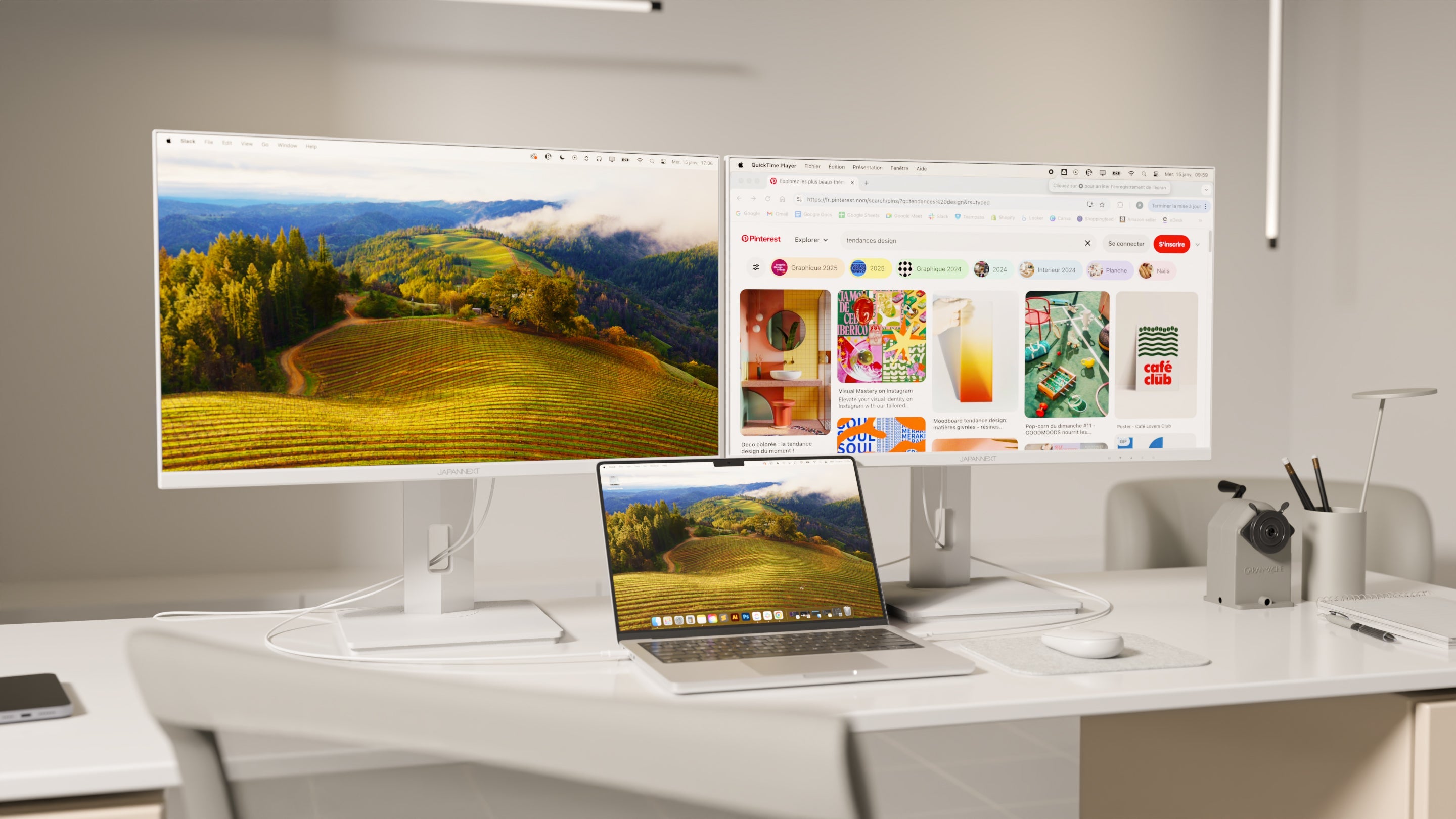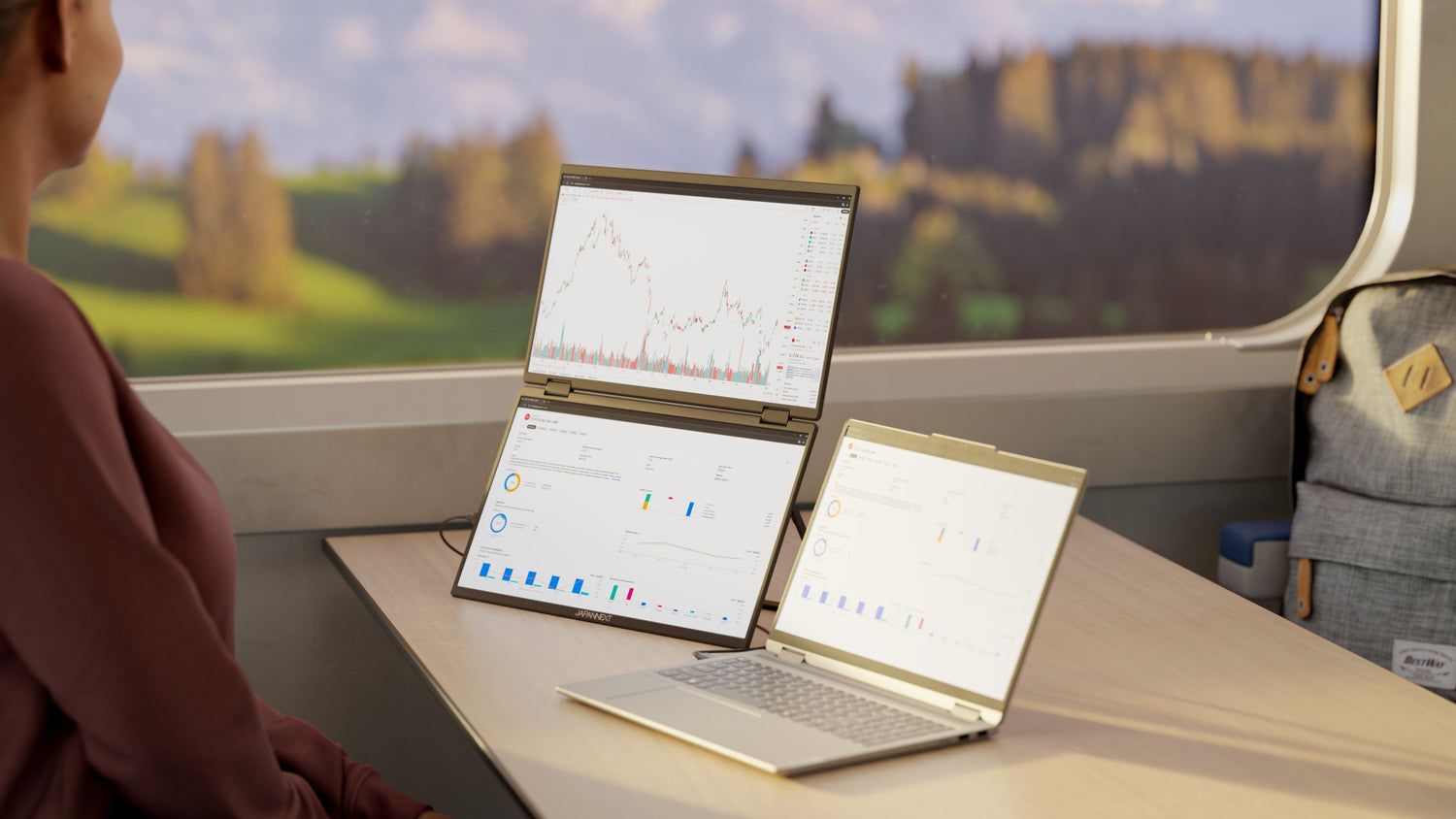4K monitors offer very high resolution and image quality, making your viewing experience more enjoyable and immersive. However, there are a large number of models on the market, with different features. To make an informed choice, here are a few relevant criteria to consider when buying your 4K monitor.
Screen size and resolution
Finding the ideal size for your 4K monitor depends mainly on how you intend to use it and how much space you have available. The larger the size, the better the watching experience. However, a monitor that's too big in a small space can cause eyestrain because the distance between the eyes and the screen is too short.
Resolution defines the number of pixels on the screen. A 4K screen has a resolution of 3840 x 2160 pixels, four times higher than Full HD (1920x1080 pixels). This resolution offers impressive sharpness and detail, making it ideal for photo and video editing or playing graphics-intensive video games.
Panel type and viewing angles
The kind of panel used for a 4K screen influences colour quality, brightness and viewing angles. IPS (In-Plane Switching) technology generally offers the best colour quality, high brightness and good viewing angles. VA (Vertical Alignment) panels, on the other hand, offer good contrast and better black depth.
So it's important to choose the right panel for the job: for graphics work or photo and video editing, go for 4K screens with an IPS panel, while for video games, a VA panel might be more suitable.
Refresh rate and response time
The refresh rate indicates the number of times the displayed image is refreshed per second, measured in Hertz (Hz). The higher the refresh rate, the smoother the image will be during rapid movements or in video games. Typically, a refresh rate of 60 Hz is sufficient for a 4K monitor used mainly for office work or multimedia. Advanced or professional gamers will generally prefer refresh rates of 120 Hz or more for optimum fluidity.
Response time is also a factor to be taken into account, particularly for video games. This is the time it takes for a pixel to change state (for example from black to white). A fast response time means less motion blur and better responsiveness. In general, a response time of less than 5 ms is recommended for 4K monitors.
Connectivity: HDMI and DisplayPort
Terminals are essential because they will determine the compatibility between your computer and your 4K monitor. The two most common types of connector are HDMI and DisplayPort. HDMI 2.0 supports 4K resolution at 60 Hz, while HDMI 1.4 is limited to 30 Hz. DisplayPort 1.2 also supports 4K at 60 Hz, while DisplayPort 1.4 delivers up to 120 Hz.
So it's important to check which connectors are available on your computer and your future 4K monitor to ensure compatibility and optimum image quality.
Other possible connections
Other connections may be available on some 4K monitors, such as USB ports for easy device connection (keyboard, mouse, external hard drive, etc.), Thunderbolt 3 for faster transfer speeds and fast charging, and audio inputs for connecting headphones and speakers directly to the monitor.
Design and ergonomics
The design of your 4K monitor can be an important criteria, especially if you spend long hours in front of it. Some offer a slim, elegant design with thin edges, while others emphasise the gaming aspect with more aggressive colors and shapes. Ergonomics should also be taken into account: a stand that can be adjusted for height, tilt and rotation helps to minimise visual and physical fatigue during extended use.
Power consumption and environmental certification
A 4K monitor generally consumes more energy than a Full HD model due to the higher number of pixels it has to handle. You should check the power consumption of the model you are considering so as not to add any extra cost to your electricity bill. What's more, some monitors have environmental certifications such as Energy Star or EPEAT, indicating that the product has been designed to comply with ecological standards, such as limiting harmful substances or reducing energy consumption.
Conclusion
To choose the right 4K monitor, a number of criteria need to be taken into account: screen size and resolution, panel type, refresh rate and response time, connectivity, design/ergonomics and power consumption. It's essential to identify your personal and professional needs in order to find a monitor that suits you and gives you the best watching experience.



